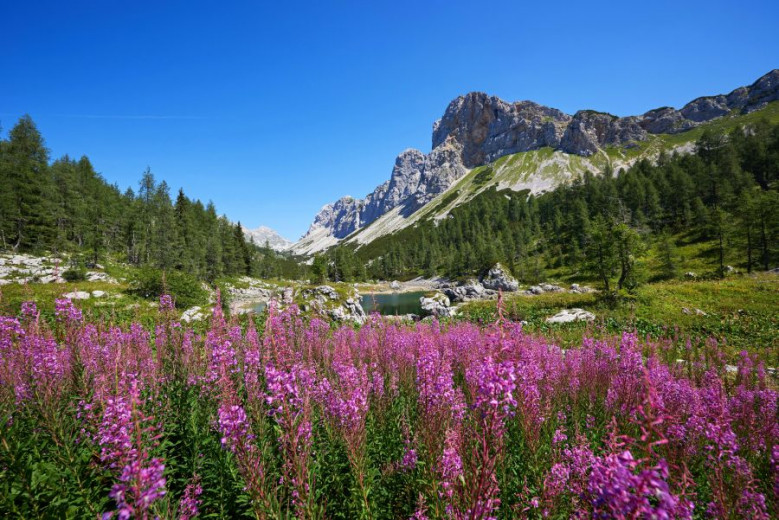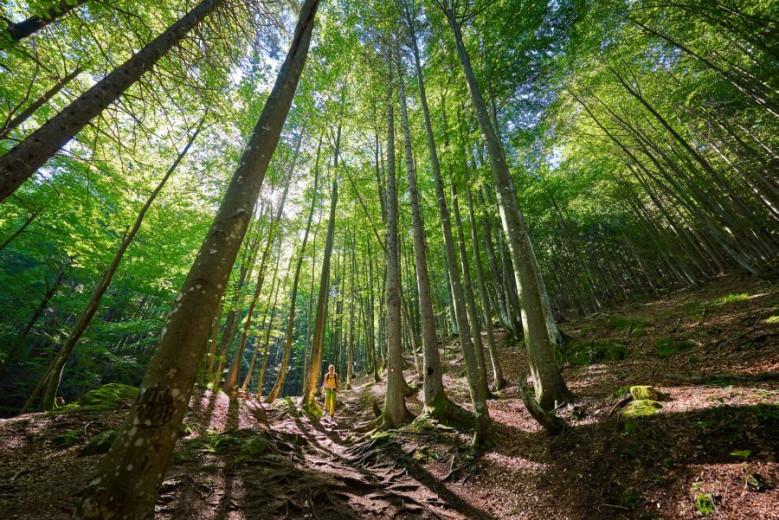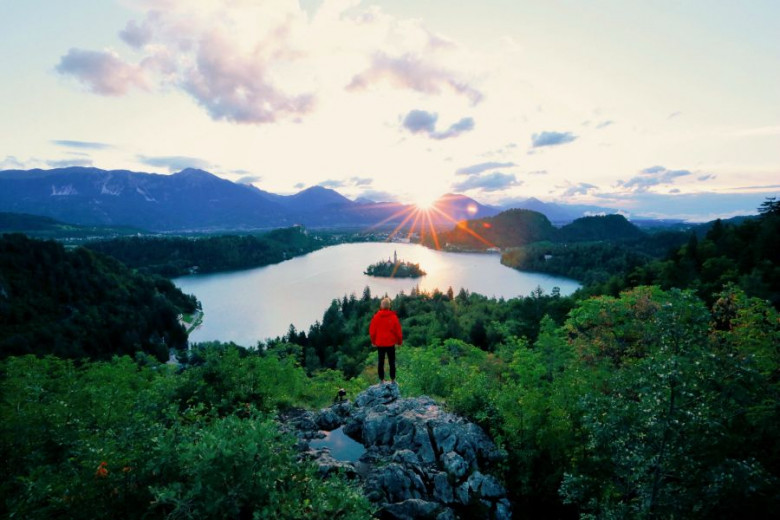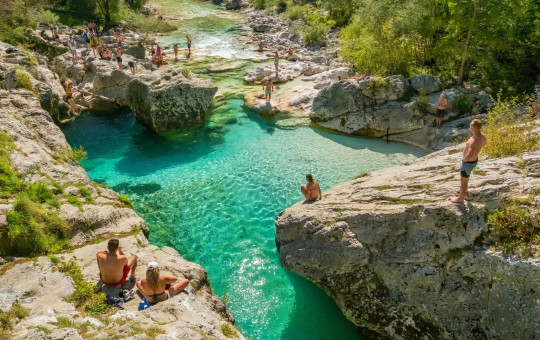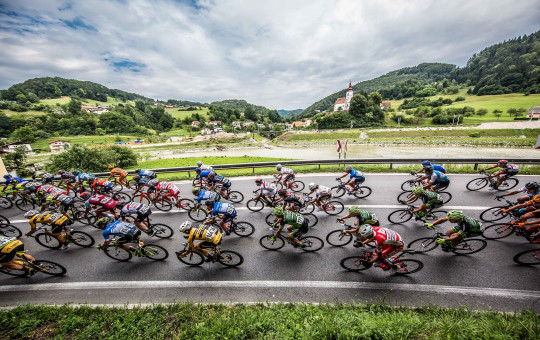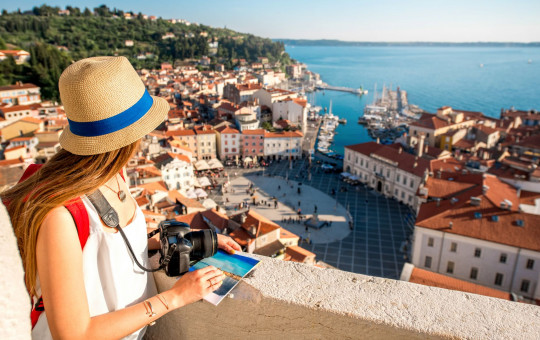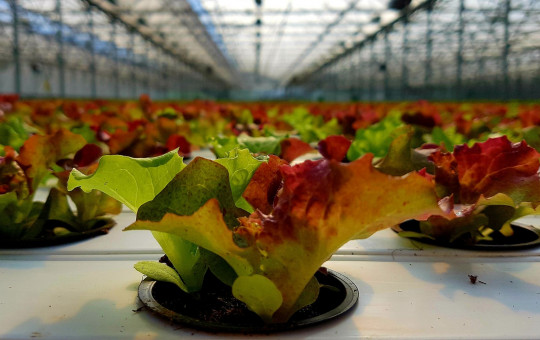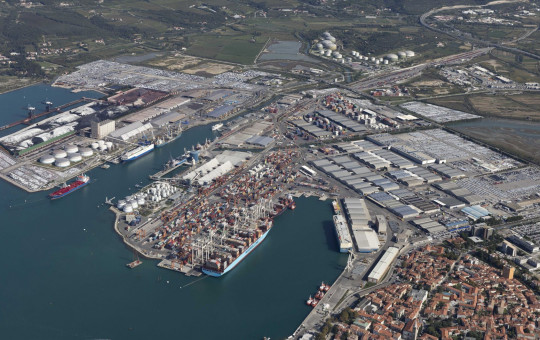Slovenians are lucky to be able to live in such a beautiful and lush part of the world. They can enjoy the rich diversity that nature has provided – a land covered in forests, hills and mountains, as well as clean waters and a coastline.
Forests
As much as two-thirds of Slovenia is covered forests, which means that it also has a rich ecosystem. There are 71 indigenous tree species found in Slovenian forests: 10 deciduous and 61 coniferous. The most common are beech and fir trees, followed by spruce, maple, oak, pine and ash. The trees breathe, purifying the air, prevent erosion, and also help cool their surroundings. Forests also provide their own bounty from spring to autumn.
Slovenians enjoy spending time in forests and in early summer they frequently pick wild blackberries, raspberries, strawberries and blueberries.
Another popular activity in Slovenia is picking spruce tips to make a syrup that is used to treat coughs and respiratory problems. During the heat of summer, the forests provide a cool haven for a retreat. Talking a walk in a forest or along its edge is simply therapeutic. Then, in autumn, comes the time to pick mushrooms. Slovenians are mushroom experts and enjoy picking them. It’s no surprise then that mushroom soup can be regularly found on restaurant menus during this season. How many mushrooms there are to be found depends on the amount of rain that falls at the end of summer. But keep in mind that there are laws on how many mushrooms and berries that you can pick. This is to keep Slovenian forests from being overly depleted. Autumn is also the season to pick chestnuts, which are a delicious either boiled or roasted. When Slovenian towns are filled with the aroma of roasted chestnuts, you know that winter is almost here.
Mountains
More proof that Slovenians are closely tied to nature is in the amount of time they spend in the mountains. Many people spend their daily leisure time by going hiking or cycling up nearby hills. Then, on weekends, they go on longer trips to the mountains. The unspoiled nature and tranquillity of the Alps is like a magnet to both Slovenians and foreign visitors alike.
From the very first time you visit, the Alps always leave a lasting impression.
You quickly get a sense of the love and respect these mountains evoke. Alpinists are role models of how to behave in the mountains and care for this natural environment. Members of the Alpine Association of Slovenia mostly voluntarily clean, maintain and teach others about how to care for the mountain paths in order to keep them clear and well marked. There is a belief in Slovenia that you are not a "true" Slovenian if you haven’t been up Triglav – Slovenia’s highest mountain, standing at 2,864m – at least once.
Water
Slovenia is exceptionally rich in water resources. It has many springs, streams, brooks, rivers, lakes and even a coastline. There are three groups of glacial lakes that are of exceptional value from the perspective of natural conservation, namely the Triglav Lakes, Krn Lake and Križ Lakes. Our biggest natural lakes are those of Bohinj and Bled. On hot summer days, both lakes are popular destinations for the countless people looking to cool off in the water. Lake Bled can reach temperatures of around 25°C, while Lake Bohinj is usually a few degrees colder. Both are very popular among Slovenians – not only for swimming, but also for walking around.
But these lakes are not the only place to go for a swim in summer and there are a number of rivers where you can enjoy a dip.
Slovenia also has plenty of thermal and mineral springs, around which spa resorts have sprung up. There is an abundance of clean drinking water in Slovenia, while the country also has its own slice of the Adriatic coast.
And the sea does have a special charm. Slovenians love going to the seaside, even if only for one day or the weekend. It is the perfect place to swim, go on walks or go cycling. The saltpans on the coast are of particular interest, as this is where a piece of the shore has been dedicated to producing salt. The area around the saltpans is a landscape park and is home to rare, endangered and typical flora and fauna.
Date: 9. September 2019
Time to read: 4 min

